Mayor’s Blog 153 27th June, St James Park Care Home, Bradpole This was a beautiful sunny…
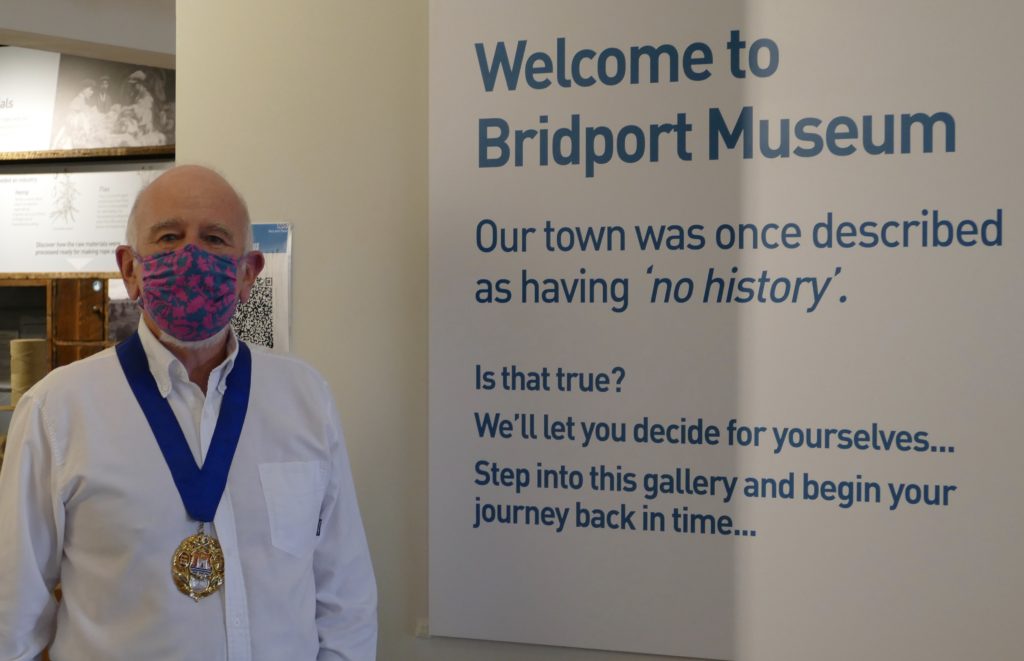
Mayor’s Blog – Bridport Museum
Bridport Museum
I recently had the pleasure of visiting the newly reopened Bridport Museum. Like many similar places across the country it has had to remain closed due the current Covid-19 pandemic. Having its doors open again has provided a boost for museum staff and volunteers who have all been feeling extremely frustrated during the period they have not been able to share what must be one of the jewels of Bridport with the wider public.
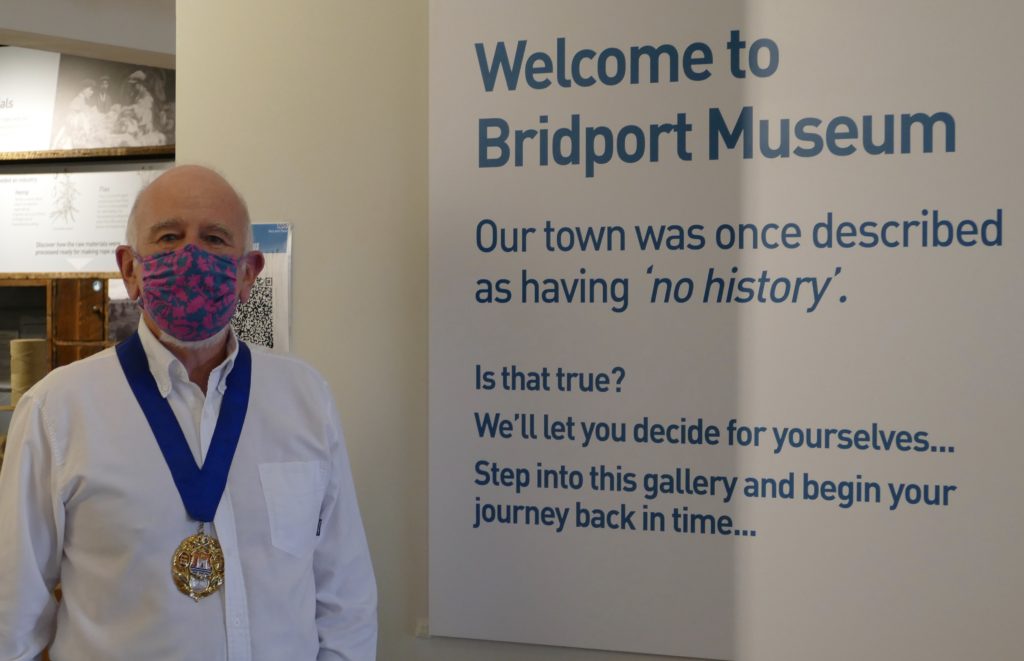
That said there has been a great deal of work quietly going on behind the scenes. For example a group of volunteers have taken advantage of the enforced closure to spruce up the museum and give it a thorough clean before reopening.
On arrival I was greeted by volunteer Mike who made a note of my phone number, then pointed me at the hand sanitiser, and explained the one way system they have in place. I then met Nikki Brotherton, Visitor Services Manager and some of the volunteers on duty that day, Brian, Lorraine and Pauline who can be seen in the image below. I would later meet Jon a new volunteer on only his second time on duty. Everyone made me feel very welcome and their enthusiasm and dedication to the Museum and its contents was very evident.
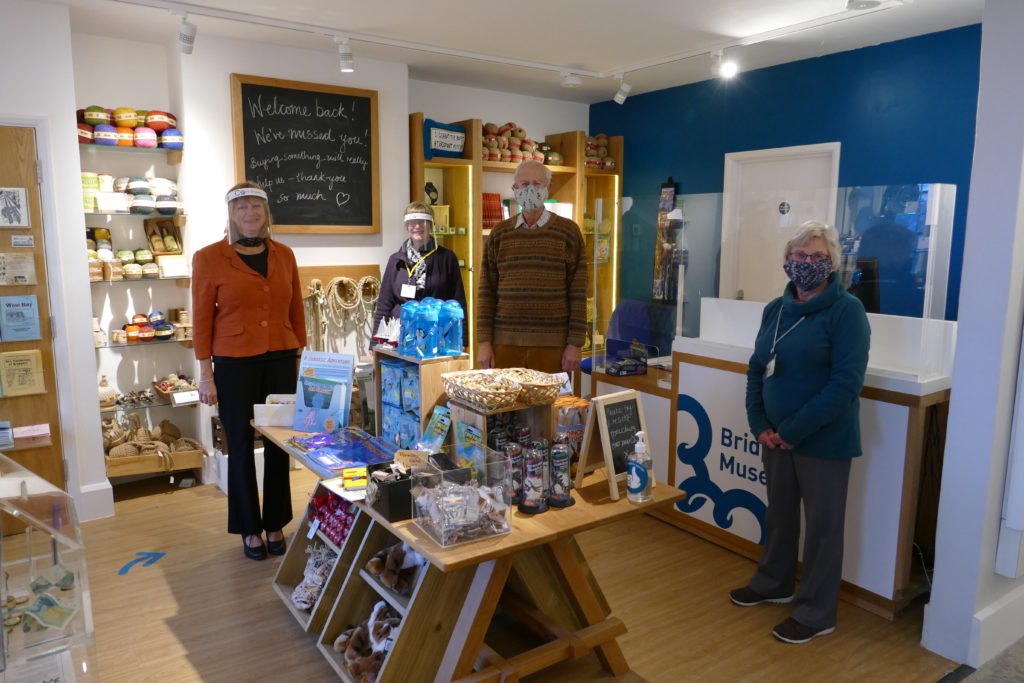



One of the consequences of the Covid 19 pandemic has been a need to double the number of volunteers on duty when the museum is open. This has led to the slightly limited hours the museum is open at present, 11.00-2.00 on Tuesday, Wednesday and Friday. If you are interested in history and enjoy sharing your passion with others why not become a volunteer. Follow the link to find out more:
The museum had a major refurbishment in 2017. It is now a place where interaction with the exhibits is very much encouraged. Apart from the wonderful displays there are interactive screens and a large number of drawers to open and explore the contents. This makes a visit to the museum not only educational and enlightening, but great fun for children of all ages.
Much of the ground floor is dedicated to the history of the rope and net making industry which Bridport is famous for the world over. Not only can you learn about the history of the industry but there are fascination examples of ropes and nets on display the uses of which range from the everyday to the extraordinary. For example if you watch Match of the Day or the Wimbledon Lawn Tennis Championships you will see nets made in Bridport on your screen.
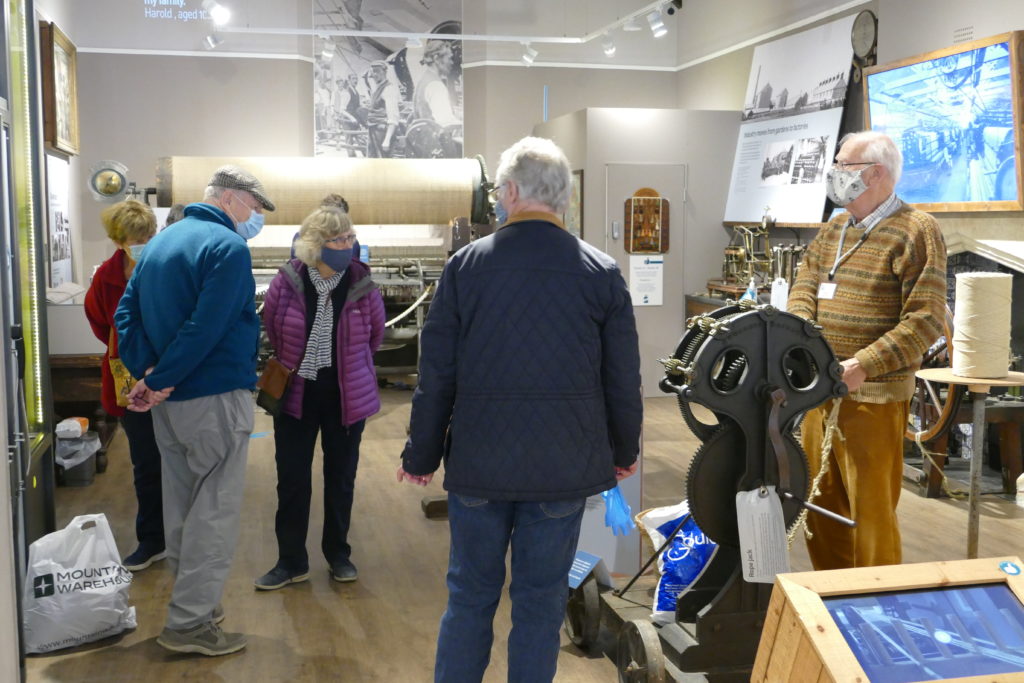



A highlight of any visit to the museum has to the rope making demonstration. On my visit volunteer Brian Parker was chief rope maker. He gave us a brief but fascinating introductory talk before setting about making a rope. I have seen this demonstration several times, with my grandchildren and various friends when visiting us, and every time like them I am mesmerised by the initial twisting of the three strands before the rope walk begins and the three twisted strands are turned into a rope.
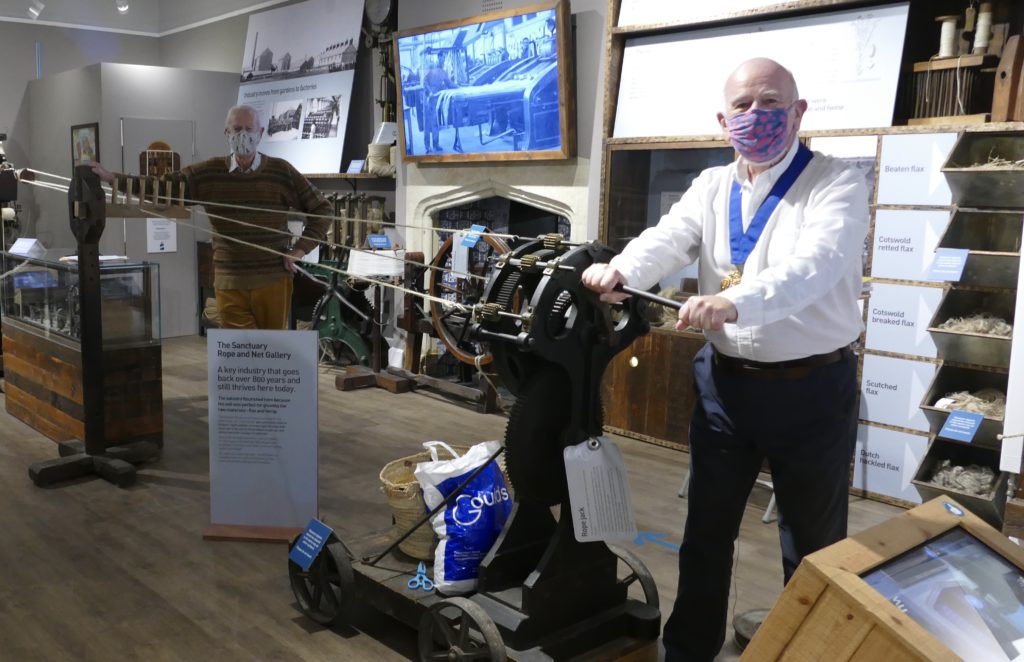



As you can see I tried my hand at turning the wheel to make a rope. For some reason you have to turn it anticlockwise. I must find out why next time I visit.
Upstairs there is an excellent display about the Jurassic Coast with some beautiful fossils on display and hidden away in drawers tempting you to open and discover.
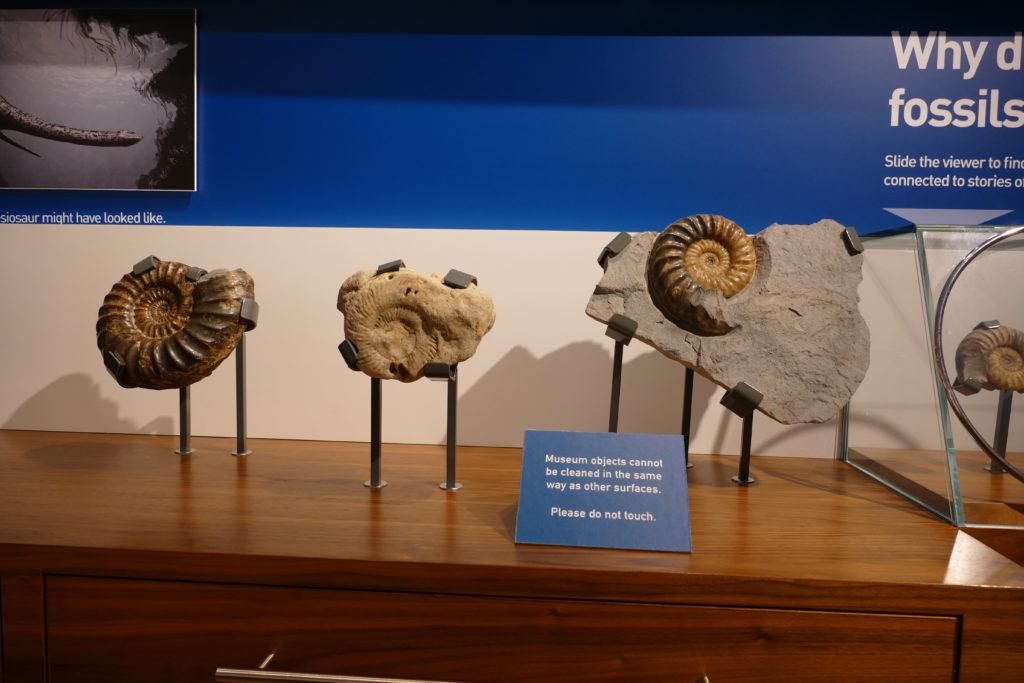



Bridport Museum was founded in 1932 by Captain Alfred Codd as ‘Bridport Museum and Art Gallery’. He wanted the museum to display his own paintings and other works from his collection. Those paintings now form the basis of the Museum’s reserve collection. I am sure you will recognise some of the images from the collection which I saw on display in the museum on my visit.
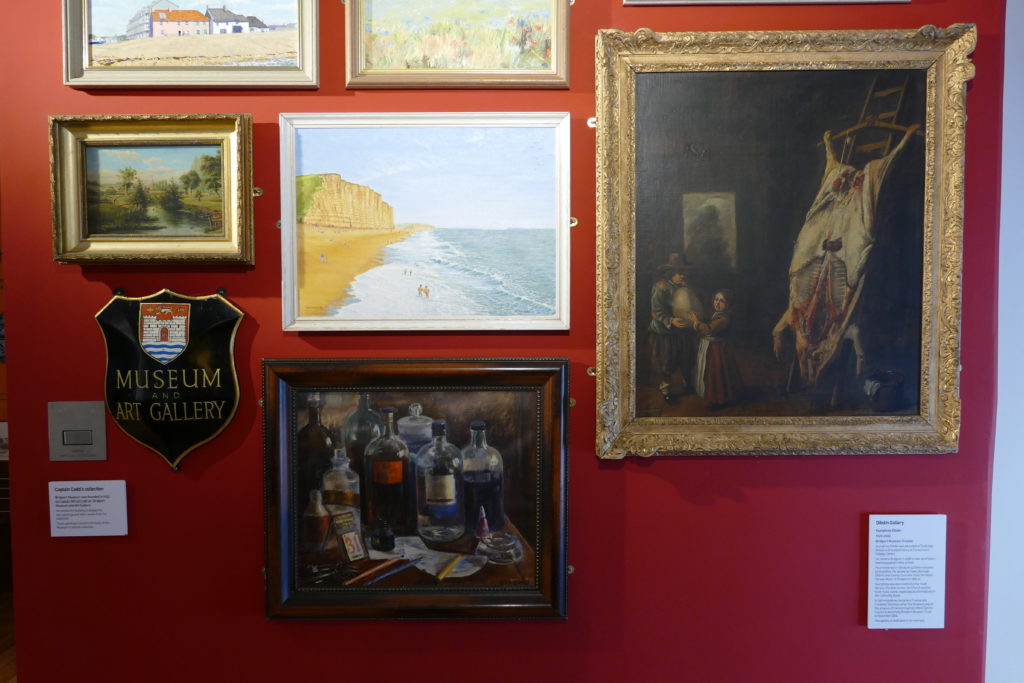



Dr Giles L. Roberts born in 1766 is one of Bridport’s most famous sons. He set himself up as a chemist, opening a shop at West Street in 1788 and his trade and reputation grew. Although he had obtained a licence to draw blood, extract teeth and cauterise wounds, Roberts was criticised for his lack of formal medical qualifications. He finally gained formal qualifications in 1797, at 31 years of age, when he was awarded an Honorary Medical Diploma (MD) from the Royal College and University of Aberdeen.
It was at this time, during the 1790’s, that he developed the formula for his revolutionary ointment known as the ‘Poor Man’s Friend’, a cure for aches, pains, gout, etc. The ointment first became available in 1798 and, amongst other ingredients, contained lead and mercury for their antibacterial and anti-fungal benefits, both ironically now known to be highly toxic!
In 1807, Dr Roberts was appointed Medical Attendant to the poor in Bridport, taking the opportunity to campaign for better hygiene and during a cholera epidemic, distributed at his own expense, a pamphlet on healthy living. On Mondays he provided free consultations to the poor. Dr Roberts was also a devout Methodist, actively preaching the gospel and opening chapels.
In the 1970’s, a pharmacist bought Dr Roberts’ old shop and discovered the original copy of the recipe for the ‘Poor Man’s Friend’ in a sealed envelope marked ‘Private’. It was bought by the Bridport Museum in August 2003 for £480. Other key pieces of Dr Roberts paraphernalia purchased by the museum included the dispensing cabinet at £2,185 that used to be in the East Street shop, his Medical Diploma and gas lights, which in 1832 had been the first in Bridport.
He life is celebrated in the interactive display seen in the image below.
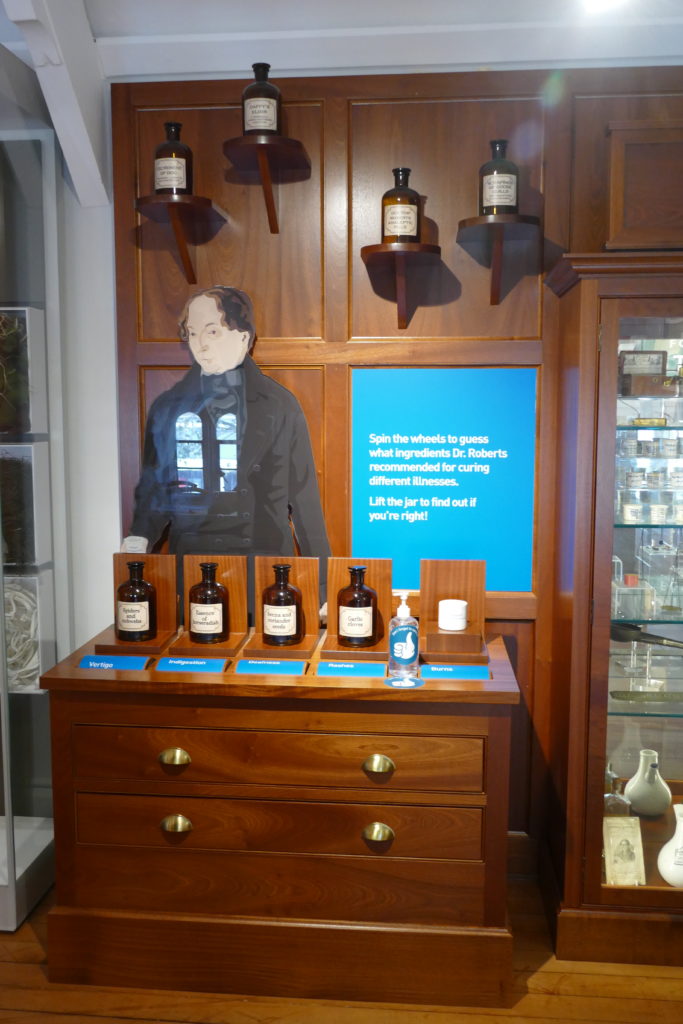



Finally we come to the infamous Bridport Dagger or hangman’s noose. But why is the hangman’s noose known as the Bridport dagger?
The Bridport Dagger is an early joke, at least as far back as Tudor times when Leland, who might have been described as geographer to Henry VIII, wrote “at Bridport be made good daggers”. He fell for the joke which referred to the local hempen rope made into the hangman’s noose.
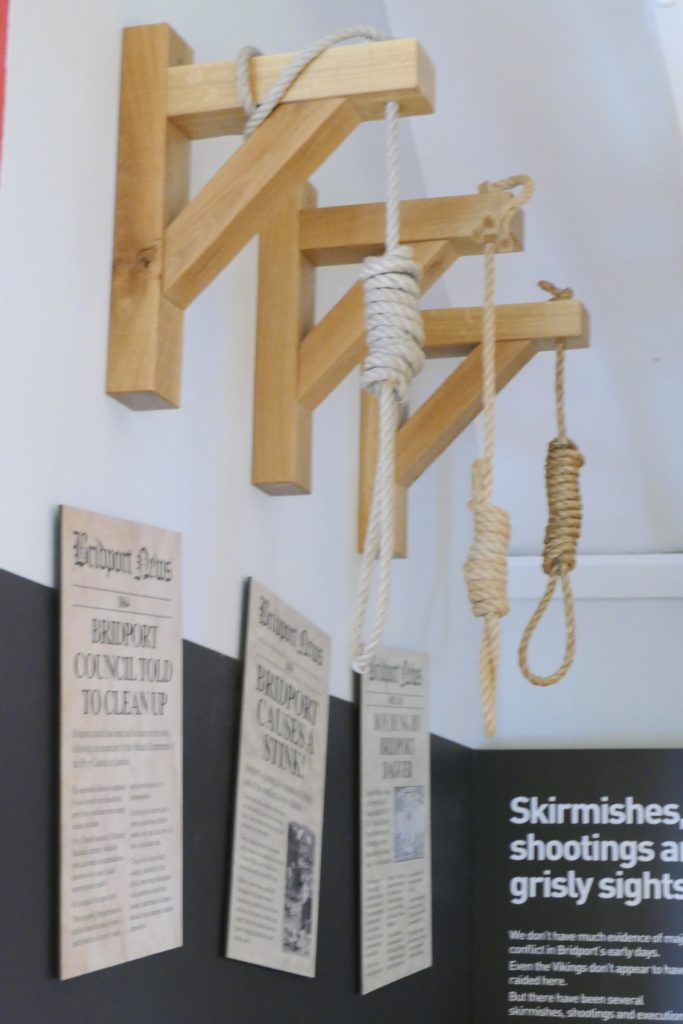



The hangman’s rope was traditionally made in Bridport which gave birth to the local proverb being ‘stabbed by a Brydport Dagger,’ referred to anyone who had been hung by the noose. Thank goodness there is no longer a market for the Bridport Dagger.
Three Bridport Daggers are on display each made of a different material. What are they made of?
I thoroughly enjoyed my visit to the museum. It has to be one of the ‘must go’ places in town for locals and visitors alike. If you think you know Bridport think again I learn something new every time I visit and I know there is much more to learn.
Another way to learn more about our fantastic town is to go on one of the museums Guided Walks. To find out more go to:
If you really want to delve deep into Bridport’s history the museum’s Local History centre located at The Grove in Rax Lane. It is not currently open due to Covid-restrictions, but volunteers can answer enquiries sent in via the website.
Bridport Museum was one of 1385 arts and cultural organisations to be awarded money from the Government’s Cultural Recovery Fund. The grant of £50,000 covers income that was lost during the Museum’s closure, and will help towards a more sustainable future.
When I spoke to Karen Hunt, Chair of Bridport Museum Trust, she told me that the Museum welcomes this much-needed grant and the continued support of Dorset Council and Bridport Town Council as well as the local community. ‘During these challenging times, it is so gratifying to see visitors return to enjoy our wonderful museum. Just pop in when you are passing. But if you are not ready yet, or want more, have a look at some of the Bridport stories on the Museum website – from the Bridport tiger to the towns’s connections with slavery.’

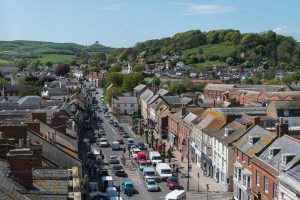

This Post Has 0 Comments